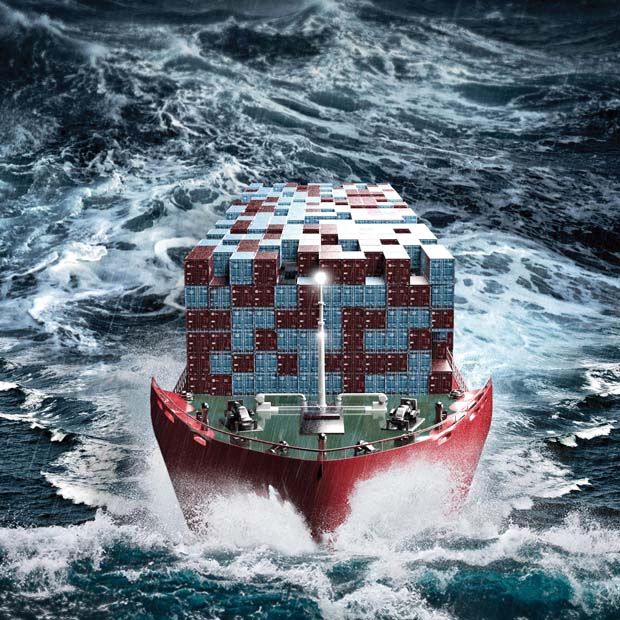From the brainiacs at IEEE Spectrum:
If Rolls-Royce has its way, commercial vessels will soon have no crew on board

It’s midnight on the North Atlantic, where a massive container ship receives the latest weather report. There’s a nasty storm brewing ahead. Quietly, the ship changes course and speed, to skirt the worst of it and ensure an on-time arrival at its destination. The ship’s owners and the harbormaster at its next port of call are advised of the revised route. And as it nears shore, the giant ship must correct course once again, this time to steer clear of a fishing vessel off its starboard bow.Previously:
Just another day for trans-Atlantic shipping, it might seem. In fact, it’s not. You see, this ship has no one aboard. It’s commanded from an operating center on the other side of the world, where technicians are monitoring and controlling this vessel and others like it through a satellite data link—that is, when the ship isn’t just controlling itself.
Although robotic ships of this sort are some ways off in the future, it’s not a question of if they will happen but when. My colleagues and I at Rolls-Royce anticipate that the first commercial vessel to navigate entirely by itself could be a harbor tug or a ferry designed to carry cars the short distance across the mouth of a river or a fjord and that it or similar ships will be in commercial operation within the next few years. And we expect fully autonomous oceangoing cargo ships to be routinely plying the world’s seas in 10 or 15 years’ time.
Remotely controlled ships, piloted by people on shore, and autonomous ships, which can take actions for themselves, are the latest beneficiaries of increasing digital connectivity and intelligence. These developments in electronic sensors, telecommunications, and computing have sparked interest in a range of autonomous vehicles including cars, planes, helicopters, trains, and now ships. Companies and academic researchers around the world are working hard to turn these ideas into reality.
In particular, Rolls-Royce has mounted a joint industry project in Finland called Advanced Autonomous Waterborne Applications (AAWA). The participants hope to create the technology for a remotely controlled or fully autonomous ship that will operate in coastal waters before the end of the decade. And we’re not alone.
The European Union’s MUNIN (Maritime Unmanned Navigation through Intelligence in Networks) project, led by the Fraunhofer Center for Maritime Logistics and Services, in Hamburg, is assessing the technical, economic, and legal feasibility of operating an uncrewed merchant vessel autonomously during an open-sea voyage. In addition, researchers at DNV GL, an international ship-certification organization, are exploring the feasibility of using uncrewed battery-powered vessels to transport freight along Norway’s long coastline. And China’s Maritime Safety Administration and Wuhan University of Technology have partnered in their Uncrewed Multifunctional Maritime Ships Research and Development Project. Their goal is to find ways for autonomous ships to be used within China’s own commercial and military maritime sectors.
Clearly, there’s a lot of work being done on robotic ships. I’d like to give you here an insider’s perspective about the nature of these efforts and why they are so exciting....MUCH MORE
July 2016
Autonomy: "Rolls-Royce’s cargo ship of the future requires no onboard crew"